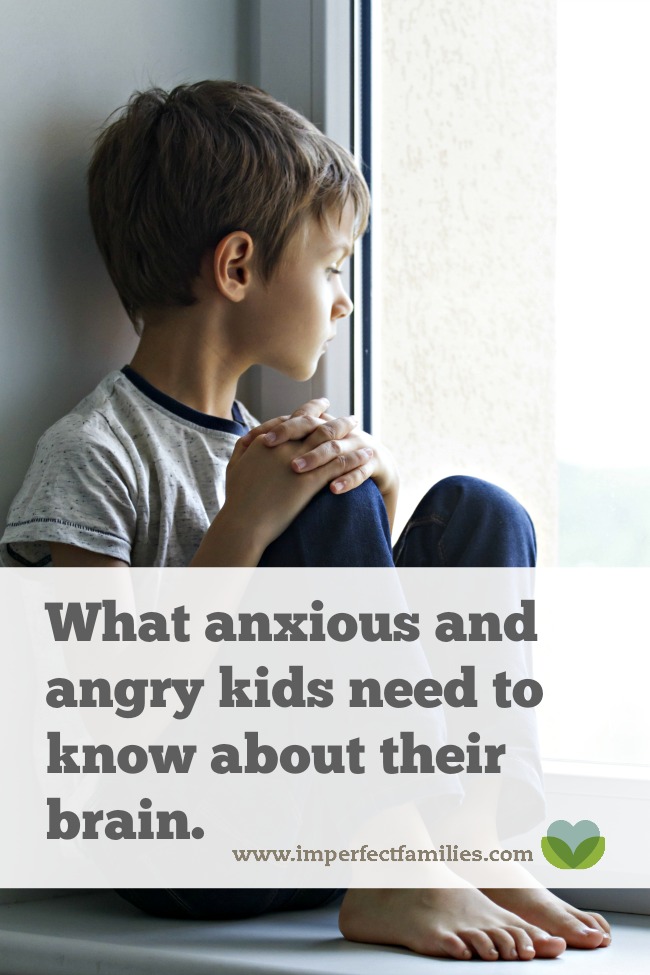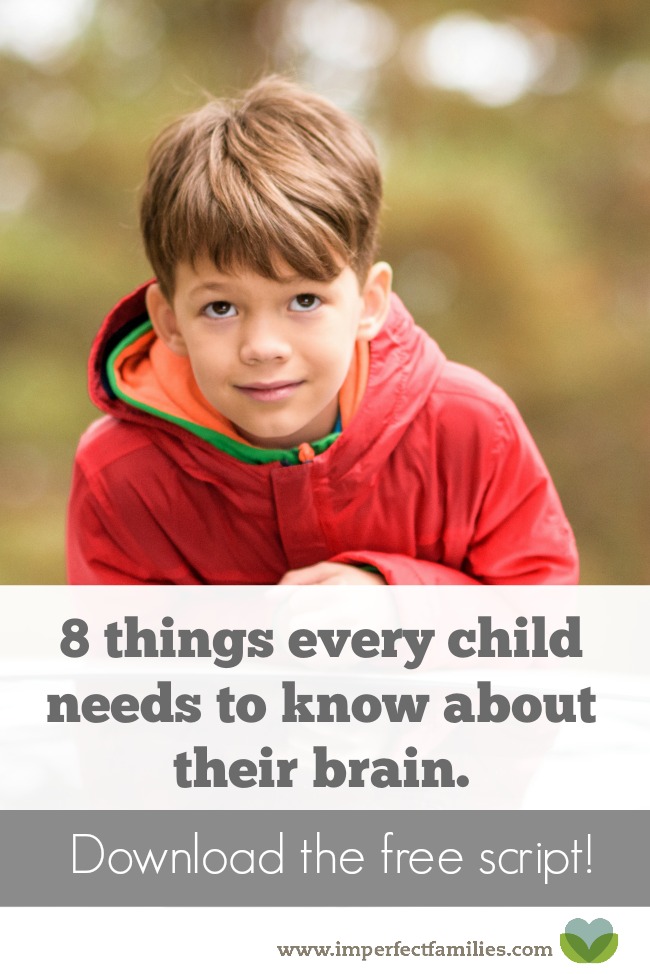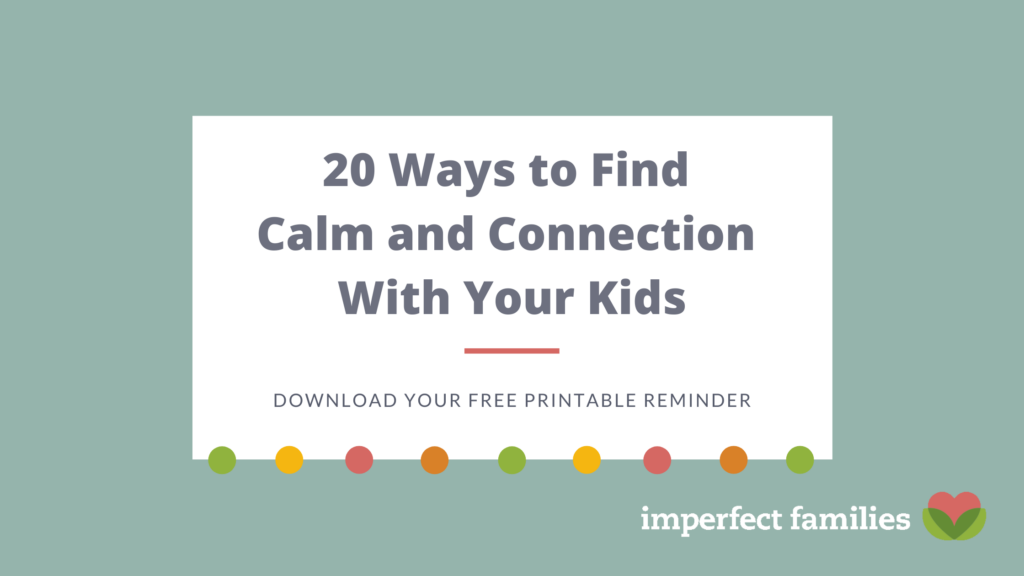
This post contains affiliate links. Using these links, I earn a small commission at no additional cost to you.
“Settle down,” you say above the screaming.
It sounds more like a threat than a caring suggestion.
“I don’t know how!” your child jeers back.
You shake your head, sighing. How many times do you need to remind her to take a deep breath when she’s upset?
Obviously, something’s missing here.
Big Feelings. Big Confusion.
Big feelings like anger, frustration, jealousy, anxiety, sadness, and stress can be overwhelming to kids. Without warning, their body is flooded with physical sensations – racing heart, tense muscles, sweat, tingling fingers.
Plus, their thoughts can get pretty confusing, “I hate you, mom!” on the outside may conflict with, “Wait, what? I don’t hate my mom, why did I just say that?” on the inside.
When we step back, it’s easy to see why some kids feel so helpless when it comes to managing big feelings.
One way to empower your child (and to reassure them that they are totally normal), is to teach them about the brain.
Introducing…the Brain.
Here is a very simplified explanation of the brain and how it works. You can alter this script depending on the age and developmental stage of your child.
(Of course, there are people who actually study the brain, and they have much more detailed explanations of these principles if you’re interested.)
The Brain has Lots of Jobs:
What to tell your kids: “Have you ever thought about all of the things your brain is in charge of? I mean, your brain is the control center for pretty much everything you think, feel, or do! That’s pretty amazing. Let’s list some things your brain controls.”
For you: Keep this in mind when thinking about discipline. Changing your response can change the entire conversation, simply because you’ve appealed to a different part of the brain.
Their Brain is Growing and Changing:
What to tell your kids: “Scientists say that when you do something over and over you create new pathways in your brain. When you were a baby, you couldn’t do much, but now your brain has learned so many things. And, guess what? Your brain is going to keep growing and changing until you’re much older.”
For you: You have the opportunity to influence strong, healthy, positive connections in your child’s brain by responding from a calm, confident, empathetic stance. (Feel like it’s too late? Start now!)
“Thinking” Part:
What to tell your kids: “Remember when we talked about the brain having a lot of different jobs? One part of your brain is in charge of making good decisions, managing your big feelings, thinking things through, and being empathetic. One author calls this your ‘upstairs brain’ – like the upstairs of a house!”
For you: Sorry parents, this part is very slow to develop. I know you want your kids to have these skills right.now. but there’s no rushing this process. You can influence good pathways, though, remember?
“Emotional” Part:
What to tell your kids: “Ok, so there’s another part of the brain. That author calls it the ‘downstairs brain.’ This part is in charge of some really important things like breathing and digesting food, and it also holds a lot of your emotions! So, this is where your big angry or worried feelings come from!”
For you: This is the most primitive and reactive part of the brain. This is also the part that’s running the show during your child’s meltdown about having peas for dinner.
Flight, Fight or Freeze:
What to tell your kids: “Inside this ‘downstairs brain’ is a tiny part who’s job is to react to threats! When it thinks you are in danger it will tell you to do one of three things – run away, fight back, or freeze. Let’s think of some times when these responses would be really helpful.”
For you: You have this part in your brain too, it’s called the amygdala! Power struggles are often the result of two amygdala’s going head-to-head (so to speak).
Empowering Your Kids.
Now that you’ve laid the foundation, you can use this information to teach and talk about their thoughts, feelings and behaviors in terms of their brain function.
Sometimes the Brain is Wrong:
What to tell your kids: “There are times when your brain thinks there’s a problem, and sends you the signals to ‘fight, flight or freeze’ but there’s really no reason to panic.
Like when you see a big black thing on the floor of your room. Your body might freeze – not wanting to get any closer. You might scream, ‘Mom! There’s a huge spider in here!’ But, when we get down on the floor, we realize it is actually a piece of black fuzz!”
For you: This is true for you as well! Sometimes, your brain will tell you that the situation in front of you requires IMMEDIATE ATTENTION (sibling rivalry, aggressive behavior, etc.) Actually, in most cases, these things are not true emergencies.
Building a Bridge:
What to tell your kids: “I know it’s scary when you have such big feelings. That ‘downstairs brain’ is really loud. It will say things like, ‘Math test! Panic!’ or ‘Your sister has the TV remote! Grab it!’ But remember, you still have the ‘upstairs brain!’ We’re going to work together to switch from the ‘downstairs brain’ to the ‘upstairs brain’ when you’re feeling big feelings. Can you help me think of some things that may help?”
For you: If you know your child is responding from the “downstairs brain” it’s time to switch tactics and get the “upstairs brain” on board. You can do this by responding with empathy, getting down to their level, and offering connection.
Calm Brains make good choices:
What to tell your kids: “Since the ‘downstairs brain’ is not always right and tends to over-react in some situations, we need to make sure we use the ‘upstairs brain’ to make decisions. I know this is hard to remember when the ‘downstairs brain’ is in charge, but we are going to practice and I’ll help you through it.”
For you: Instead of focusing on getting your child to calm down, think more about how you can calm your own “upstairs brain.” You’ll be better able to support, connect and empathize with your child’s big feelings.
Parenting And The Brain
Now, you and your child have a shared language to use when talking about big feelings, big actions, or big worries.
But remember, this is not just about your child. There are a lot of things you can do to encourage strong, healthy, happy brain development…even if your child is too young, or not interested in learning about the brain:
- Responding with connection
- Keeping yourself calm
- Setting limits with empathy
- Listening
- Looking beyond the behavior
Click these titles to read more about the brain:
Introducing...the Brain!
Download your FREE printable script from Nicole Schwarz, LMFT, Parent Coach to help you talk with your child about their brain, plus you'll also receive weekly parenting tips sent to your inbox!
By signing up to receive this freebie, you agree to my Disclosure and Privacy Policy.








Comments have been turned off to retain the privacy of all families. If you have a question or comment on the topic, you're always welcome to contact me.